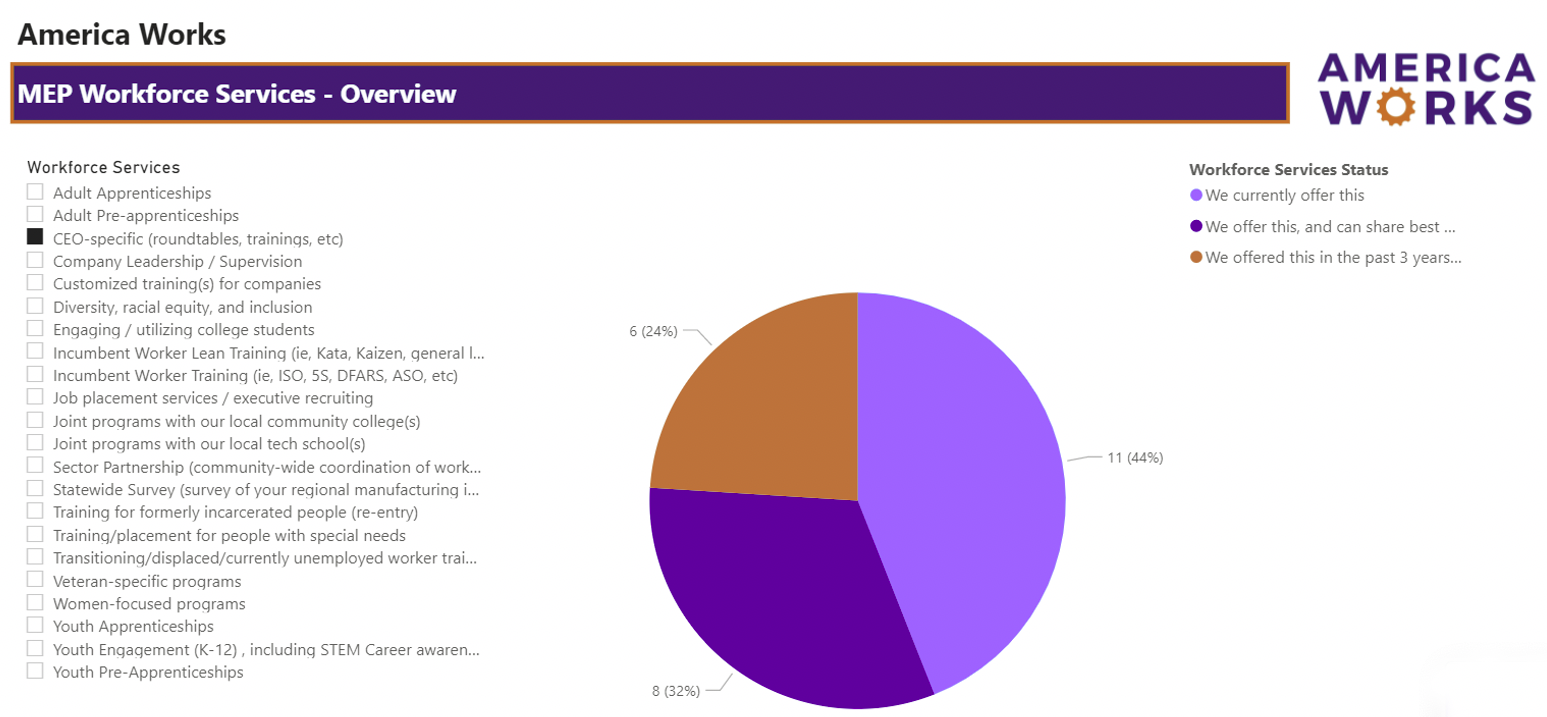26, May 2021
Introducing the MEP Workforce Database

Credit: iStock/atakan
By: Matt Fieldman
This blog is the third in a monthly series brought to you by the new America Works initiative. As a part of the MEP National Network’s goal of supporting the growth of small and medium-sized manufacturing companies, this series focuses on innovative approaches, and uncovering the latest trends in manufacturing workforce development.
When you want to know something, what do you do? You Google it, of course!
But if you want to understand how the MEP National NetworkTM is approaching workforce development across the 50 States and Puerto Rico, what do you do? Well, you may not be able to just Google it yet – but we’re getting there.
Let me explain. As readers of this monthly blog know, one of the central goals of America Works is to help coordinate the MEP National Network around workforce. To do that, we must first answer two questions:
- When it comes to people-centered programs, what are MEP Centers currently offering?
- In the spirit of “skate to where the puck is going,” what programs would MEP Centers like to offer in the future?
I’m excited to tell you that the MEP Workforce Database captures the answers to both these questions, and much more. Since this database is presently only accessible by MEP Centers, you can contact your local MEP Center to gain some of the insights it contains. Currently, the database has 49 responses from 41 individual MEP Centers (some Centers, like Ohio and Pennsylvania, have multiple subrecipients who each responded), and is split into nine different dashboards. The whole database is interactive, allowing MEP Center staff to “drill down” to identify specific types of responses or even individual respondents, empowering Centers to reach out to their peers across the Network. We are constantly gathering more responses from more Centers. Not part of the MEP National Network but want to see what the heck I’m talking about? Feel free to request a tour.
So, what is found in the MEP Workforce Database? Here are just four highlights:
- Who do MEP Centers tend to partner with around workforce? Not surprisingly, the most popular partner for MEP Centers are community colleges, followed by workforce development boards and other regional or statewide economic development organizations. Some MEP Centers might be interested in reaching out to local nonprofits, private training partners, and national organizations or associations as new potential partners in these programs.
- What are the most popular workforce consulting services? Of the 22 different workforce consulting services measured, MEP Centers are most focused on incumbent worker trainings – lean, ISO, quality, Training Within Industry (TWI) and more – with company leadership, supervision and customized trainings all very close behind. MEP Centers that want to strengthen their current offerings, or grow into new areas, can look for best practices from those Centers working with non-traditional populations like veterans, youth, people with special needs, and women.
- What methods of training are being used, and how has the pandemic affected these methods? The data captures how MEP Centers have pivoted in response to the pandemic, from in-person classes to virtual trainings. In addition, users can dive deep into which Centers are leveraging new technologies and methodologies like learning management systems (LMS), game-based simulations, and a wide variety of virtual classes.
- Which areas are most interesting to MEP Centers in terms of growth? The America Works team is eager to know – and then provide – the most relevant content to Center Directors and workforce professionals nationally. The database gives a fascinating snapshot of where Centers want to grow in 2021 and beyond, especially as it relates to diversity, equity, and inclusion. Take, for example, manufacturing training for re-entering citizens: 14 respondents want to learn more via a webinar, five aren’t interested in the topic, three want to attend a working group to dive deep into the issue, and six would like to scale and replicate successful programs into their communities.

In this screen shot straight from MEP University, you can see the 22 areas of workforce programming measured by the survey. This MEP Center staff member has clicked on “CEO-specific programs.” Now, they can not only see how the answers break down (11 currently offer this, eight offer this and can share best practices, and six no longer offer this service), but can then get contact information for each group to connect with them and ask any specific questions.
Admittedly, this is a beta version, with future upgrades already planned. The plan is to continue gathering responses through the end of 2021 and launch a new-and-improved survey and database in January 2022. As more responses come in, and more data is gathered, the database will grow into a central tool for understanding where MEP Centers are currently excelling, what best practices are available to share, and what areas MEP Centers are looking to grow into in the future.
So, while it may not exactly be Google, empowering MEP Center staff through robust, easy access to workforce information nationally will be critical to advancing our advanced manufacturing workforce, today and for years to come.
Blog originally appeared here.